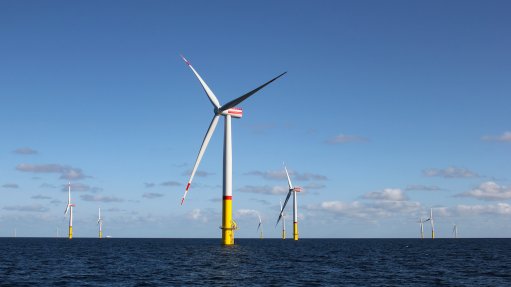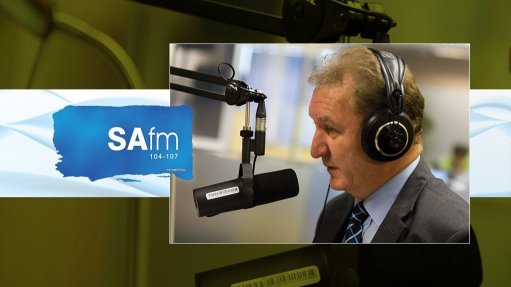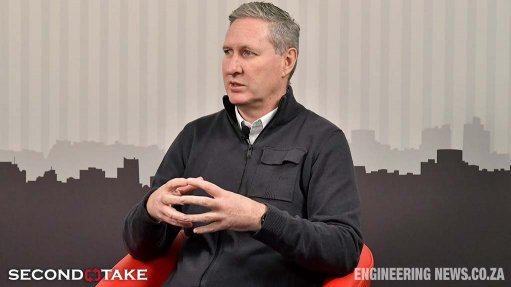Opinion: Funding social justice in the energy transition, a role for private sector financing at scale?
In the executive summary of a new report, commissioned by the African Climate Foundation, Intellidex writes that the status quo is not fit for purpose to support the financing of the social justice issues in the Just Energy Transition (JET) required and more innovative thinking on structures, institutions and combinations of capital flows are required urgently to generate the kinds of scales of financing for transition projects across mitigation, adaptation and resilience.
In all countries, the transition to a new, low-carbon energy system is not just a technical exercise in establishing which technologies can best suit our needs for electrification at the lowest financial and carbon emissions cost. The changing structure of the energy system will affect patterns of employment and ownership – not only within the energy sector. This far-reaching systemic change will have distributional consequences: there are clear potential winners and many potential losers. The energy transition therefore requires a political process of negotiating this distribution of losses and gains in a fair way. Failure to do so will lead to an intensification of already unsustainable levels of unemployment and poverty.
These broad social risks and how they can be alleviated is the foundation of this report. However, given the scale of the potential social risk, the costs of their mitigation and the likely difficulties that the state will experience in meeting all these costs on its own, we focus in particular on the potential contributions that private capital can make – and ultimately if this can be sufficient, or if not what measures need to be taken to ensure such financing flows are scaled. In this sense this report focuses more narrowly within the broader set of issues around private sector capital mobilisation across the whole transition that our first report highlighted.
South Africa is a particularly interesting example of the need to balance the social and the technological issues – with its large and historically powerful centralised electricity sector and its reliance on coal mining. South Africa obviously also has huge issues of inequality and poverty to contend with, as the backdrop for the transition. Shutting down this carbon intensive sector as the energy system pivots to renewable and other cleaner forms of energy production puts over 100 000 jobs – and many of these workers’ dependents and communities – at risk. This is what we term the social risk associated with “transitioning out” of the old energy system. Workers in the sector will need a mix of early retirement packages, retraining and relocation support. Communities that host(ed) coal-intensive production facilities will also need economic restructuring where new industries and businesses are built that can absorb stranded workers. This work is urgent: a country plagued by extreme unemployment and poverty cannot afford further deterioration in these indicators.
This economic restructuring goes a step further than compensating those who are liable to lose their jobs. It is a more sustainable approach to the transition that seeks to build a new energy economy where people are able to meet their needs into the longer term. New, inclusive economies will need to be built not only in ex-coal communities but throughout the country. This is what we term “transitioning in”. Part of this is already under way: renewable energy has grown steadily over the last decade with more rapid growth forecast for the next few years. While this has been dominated by utility-scale infrastructure to date, growth is expected in smaller-scale solar installations. This represents an opportunity to employ many people in the operations, management and maintenance of decentralised energy systems across the country. This would contrast with the trends in the large-scale renewable energy sector to date, which has been dominated by large companies and development banks. Other parts of the green economy that we detail in this report also represent substantial opportunities for more localised and inclusive economic growth.
The following JET-related activities therefore require funding:
“Transitioning out”: measures to ensure workers and their communities are not left behind in the transition away from coal. This is where most of the discussion relating to “justice” is focused, for example in the JET-IP and in the public debate. This is to be expected given the size of South Africa’s coal industry, its political power and the many livelihoods that depend on it.
“Transitioning in”: this includes (a) planning for and facilitating social justice in the new energy economy and (b) climate mitigation and adaptation measures. In (a), the energy economy includes the production of energy as well as the secondary industries that will rise around the new energy system such as transport and sustainable agriculture. Our primary focus is on energy production infrastructure. This area of funding has not been subject to as much scrutiny in South Africa, but it is central to JET planning elsewhere (for example in the European Union).
It is difficult to pinpoint exactly how much these activities will cost. This is partly due to the very different understandings of what social justice is and what the scope of JET planning should be. In this report we reference two detailed costing exercises: one conducted by the World Bank and the other by the Presidential Climate Finance Task Team (PCFTT) in the Just Energy Transition Investment Plan (JET-IP).
The World Bank estimates that the cost of the energy transition in total will be R8.5-trillion in net present value (NPV) between now and 2050. Approximately half of this (R4.2-trillion) is required for the low-carbon transition. This involves building less carbon-intensive energy infrastructure and associated industries, for example fuels, construction and vehicles. R2.4-trillion will be required for climate adaptation, including building smarter, more climate-resilient cities and infrastructure and developing better, less wasteful water and waste management systems. The remainder – R1.87-trillion – is earmarked for social justice initiatives that cut across both adaptation and the low-carbon transition. This includes, for example, social ownership projects, skills training and other labour market activation programmes that will contribute to the creation of an inclusive green economy.
The JET-IP takes a more limited view of what is required to secure social justice (albeit over a shorter period). It calculates a R60-billion funding requirement over the next five years for initiatives in Mpumalanga to cater for ex-coal workers and communities. Specific activities budgeted for include repurposing of old coal plants, skills retraining initiatives and small business support programming. Beyond Mpumalanga, R3.2-billion is pencilled in for localisation and piloting of social ownership models in other parts of South Africa.
Given our broader and longer-term understanding of the scope of social justice in the energy transition – that is, that it applies equally to building an inclusive new green economy as to helping coal-dependent communities diversify their livelihoods – we prefer the World Bank calculations. These figures can be used as a rough guide that helps us to envisage the scale of the funding that will be required to promote positive social outcomes and to prevent deterioration in poverty and unemployment that a completely unplanned transition would likely bring about.
But R2tn is an enormous amount of money. It is unlikely that the state will be able to meet this funding gap without correspondingly large increases in taxation (though there is a definite role for more taxation and other public interventions that we detail in the third and final report in this series). Private investment will therefore be required.
The central question then of this work is “can the private sector play a meaningful role in financing the Just components of the transition.”
However, the market for investments in the JET that offer financial, environmental and social returns all at the same time is very small at the moment in South Africa and indeed globally nascent too. What are the options that are currently available and how can the growth of this market be stimulated? We investigated options through an extensive literature review of what has been achieved in other countries. We also spoke to various stakeholders in South Africa who are active in different capacities in the country’s energy transition and in attempts to maximise its social returns.
In the table below, we summarise some of the options for private investors interested in participating in financing the just energy transition, but in particular also where there are blockages and problems to be overcome in realising them.
A cross-cutting theme to get money flowing into new, untested investment areas is blended finance (an often abused term). This is characterised by the provision of first-loss catalytic capital by philanthropic, impact or public investors that can reduce the risk profile for more commercial investors. In this way the frontier associated with a minimum willingness to invest can be lowered for commercial investors. These “derisking” interventions may be useful in a context where money needs to flow rapidly into unchartered territory and where investments need to be tested and proven and can include structures aimed at both “transitioning in” and “transitioning out” projects.
Nonetheless it is important to note that the reduction of investment risk for private capital as part of a derisking agenda can create a different set of risks; risks that could undermine the objective of derisking in the first place. The excessive subsidisation of private returns or subsidisation in areas where it is not needed, effectively reduce the fiscal space available to the state to meet the social expenditures that are required to protect against the fallout from climate disasters and other social needs.
We emphasise that much of what is recommended above has never been done before in the South African context or, if so, only on a very small scale. Globally it is often new or not scaled. It will require bold leadership, innovation and experimentation from asset owners and managers, investors and, ultimately, shareholders that are committed to promoting and securing social justice in a world marked by accelerating climate and social instability.
Returning to our central question, though, of if the private sector has a role to play in financing social justice issues at scale – the answer is undoubtedly ‘yes’. Indeed, simply put it must do, given constraints on the fiscus and limits to grant and concessional offshore financing available. Such funds that are available will have to be used innovatively to unlock private financing at scale. However, we should not underestimate the hard work and innovation required to achieve this – without which we will be left only with some interesting small funding pilots and small innovate case studies rather than a broader, dynamic funding eco system.
As such the simple recommendation here is that without this work to provide the foundation for the private sector’s financing role to grow and scale – insufficient funds will likely be unavailable for the Just aspects of our transition to be properly and thoroughly dealt with. That is the burning platform here, and why we have written this report.
Comments
Press Office
Announcements
What's On
Subscribe to improve your user experience...
Option 1 (equivalent of R125 a month):
Receive a weekly copy of Creamer Media's Engineering News & Mining Weekly magazine
(print copy for those in South Africa and e-magazine for those outside of South Africa)
Receive daily email newsletters
Access to full search results
Access archive of magazine back copies
Access to Projects in Progress
Access to ONE Research Report of your choice in PDF format
Option 2 (equivalent of R375 a month):
All benefits from Option 1
PLUS
Access to Creamer Media's Research Channel Africa for ALL Research Reports, in PDF format, on various industrial and mining sectors
including Electricity; Water; Energy Transition; Hydrogen; Roads, Rail and Ports; Coal; Gold; Platinum; Battery Metals; etc.
Already a subscriber?
Forgotten your password?
Receive weekly copy of Creamer Media's Engineering News & Mining Weekly magazine (print copy for those in South Africa and e-magazine for those outside of South Africa)
➕
Recieve daily email newsletters
➕
Access to full search results
➕
Access archive of magazine back copies
➕
Access to Projects in Progress
➕
Access to ONE Research Report of your choice in PDF format
RESEARCH CHANNEL AFRICA
R4500 (equivalent of R375 a month)
SUBSCRIBEAll benefits from Option 1
➕
Access to Creamer Media's Research Channel Africa for ALL Research Reports on various industrial and mining sectors, in PDF format, including on:
Electricity
➕
Water
➕
Energy Transition
➕
Hydrogen
➕
Roads, Rail and Ports
➕
Coal
➕
Gold
➕
Platinum
➕
Battery Metals
➕
etc.
Receive all benefits from Option 1 or Option 2 delivered to numerous people at your company
➕
Multiple User names and Passwords for simultaneous log-ins
➕
Intranet integration access to all in your organisation


















